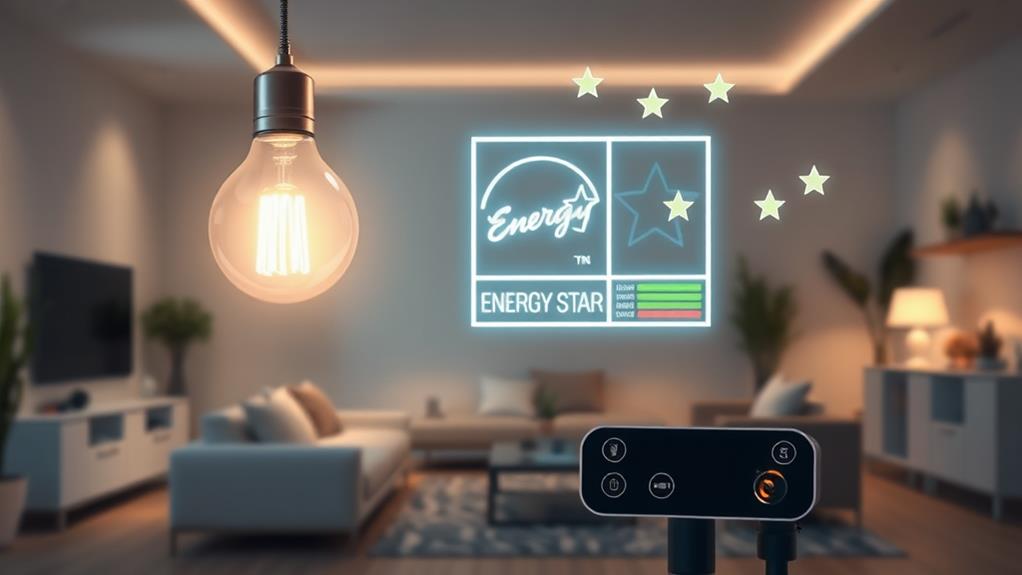Revolutionize your home's lighting with smart LED systems that offer unprecedented control over brightness, color, and automation. Pair these with solar-powered outdoor fixtures for energy-efficient illumination day and night. When choosing appliances, look for the blue Energy Star logo, indicating products that use 70-90% less energy than traditional alternatives. Implement room-specific lighting strategies, like task-oriented fixtures in kitchens and dimmable options in bedrooms. Consider the long-term savings and environmental benefits of energy-efficient bulbs, despite higher upfront costs. By understanding appliance energy consumption and making informed choices, you'll create a modern, eco-friendly living space that's both stylish and cost-effective.
Smart LED Lighting Systems
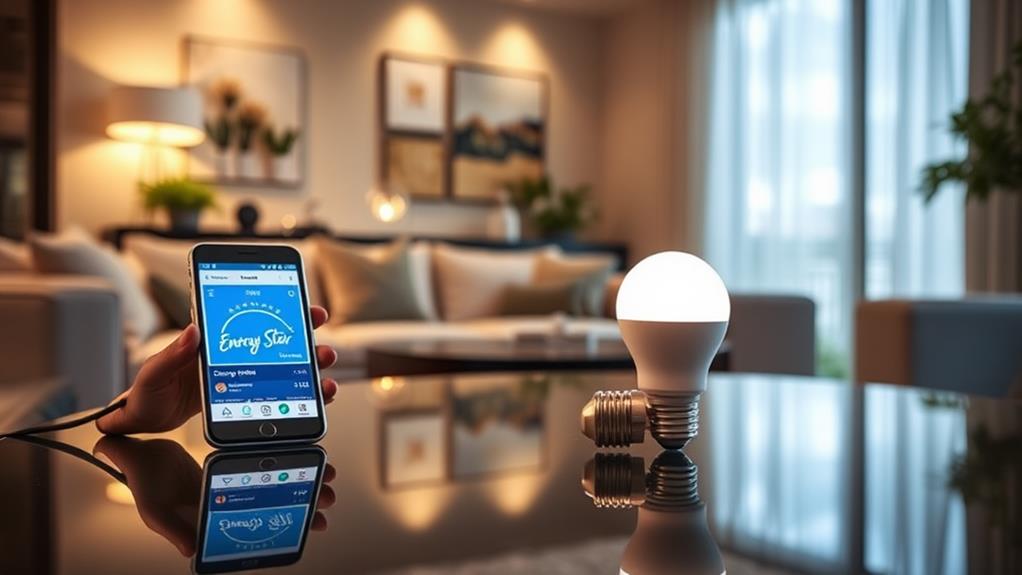
As smart home technology continues to evolve, LED lighting systems have become increasingly sophisticated. These systems offer you unprecedented control over your home's lighting, allowing you to adjust brightness, color, and even automate lighting schedules. With smart LED bulbs, you can create custom scenes for different activities or moods, all controllable through your smartphone or voice commands.
Many smart LED systems integrate with popular home assistants like Alexa or Google Home, making it easy to manage your lighting hands-free. You'll also find options that learn your habits and automatically adjust lighting based on your routines. Some advanced systems even mimic natural light patterns throughout the day, potentially improving your sleep cycle and overall well-being.
Energy efficiency is a key benefit of smart LED lighting. These bulbs consume significantly less power than traditional incandescent or even CFL bulbs. Plus, with features like occupancy sensors and geofencing, your lights can automatically turn off when you leave a room or your home, further reducing energy waste. By investing in a smart LED lighting system, you're not only embracing cutting-edge technology but also making a positive impact on your energy consumption and utility bills.
Solar-Powered Outdoor Fixtures
Moving from indoor to outdoor lighting solutions, solar-powered fixtures offer an eco-friendly and cost-effective option for illuminating your exterior spaces. These innovative lighting systems harness the sun's energy during the day and store it in rechargeable batteries, providing illumination throughout the night without relying on grid electricity.
You'll find a wide range of solar-powered outdoor fixtures available, including pathway lights, wall-mounted lamps, and decorative string lights. Many models come with built-in sensors that automatically turn on at dusk and off at dawn, ensuring efficient operation. Some advanced fixtures even offer adjustable brightness settings and motion sensors for enhanced security.
When choosing solar-powered outdoor lighting, consider the fixture's solar panel size and battery capacity. Larger panels and higher-capacity batteries will provide longer-lasting illumination, especially during cloudy periods. Look for fixtures with durable, weather-resistant materials to withstand various outdoor conditions.
Installing solar-powered outdoor fixtures is typically straightforward, as they don't require complex wiring. You can easily position them to maximize sun exposure for optimal charging. By incorporating these energy-efficient lighting solutions into your landscape design, you'll reduce your carbon footprint and enjoy lower electricity bills while creating a beautifully lit outdoor environment.
Energy Star Ratings Explained
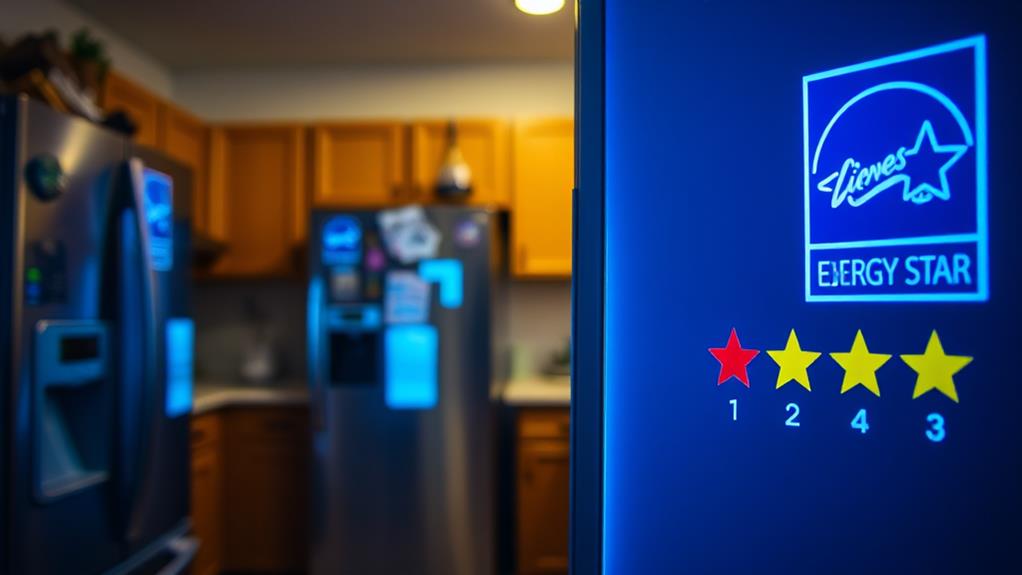
Understanding Energy Star ratings is crucial when selecting energy-efficient lighting for your home. These ratings, developed by the U.S. Environmental Protection Agency and Department of Energy, help you identify products that meet strict energy efficiency guidelines. For lighting, Energy Star certification means the product uses about 70-90% less energy than traditional incandescent bulbs.
When shopping for Energy Star certified lighting, you'll notice labels displaying estimated yearly energy costs and bulb lifespan. These labels make it easy to compare different options and calculate long-term savings. Energy Star bulbs must also meet performance standards for brightness, color quality, and consistency over time.
Look for the blue Energy Star logo on product packaging or displays. This logo indicates that the product has been independently certified to meet energy efficiency requirements. Energy Star certified light bulbs come in various types, including LEDs, CFLs, and even some halogen incandescents. They're available in different shapes, sizes, and color temperatures to suit your needs.
Efficient Lighting for Every Room
Each room in your home often requires a unique lighting approach to maximize both efficiency and functionality. In the kitchen, opt for bright, task-oriented lighting over work areas and energy-efficient LED under-cabinet lights.
For living rooms, combine ambient lighting with adjustable fixtures to create versatile atmospheres while saving energy.
In bedrooms, install dimmer switches for overhead lights and use bedside lamps with warm, low-wattage bulbs for a cozy ambiance. Bathrooms benefit from even lighting around mirrors, achieved with energy-efficient LED vanity lights.
For home offices, prioritize glare-free task lighting and natural light to reduce eye strain and energy consumption.
Hallways and stairways should have motion-activated LED lights for safety and efficiency. In dining rooms, use dimmable pendant lights or chandeliers with LED bulbs to set the mood while conserving energy.
For outdoor areas, solar-powered pathway lights and motion-sensor floodlights provide security without increasing your energy bill.
Remember to choose ENERGY STAR certified light fixtures and bulbs throughout your home to ensure optimal energy efficiency. By tailoring your lighting choices to each room's specific needs, you'll create a comfortable, well-lit space while minimizing energy waste.
Appliance Energy Consumption Breakdown
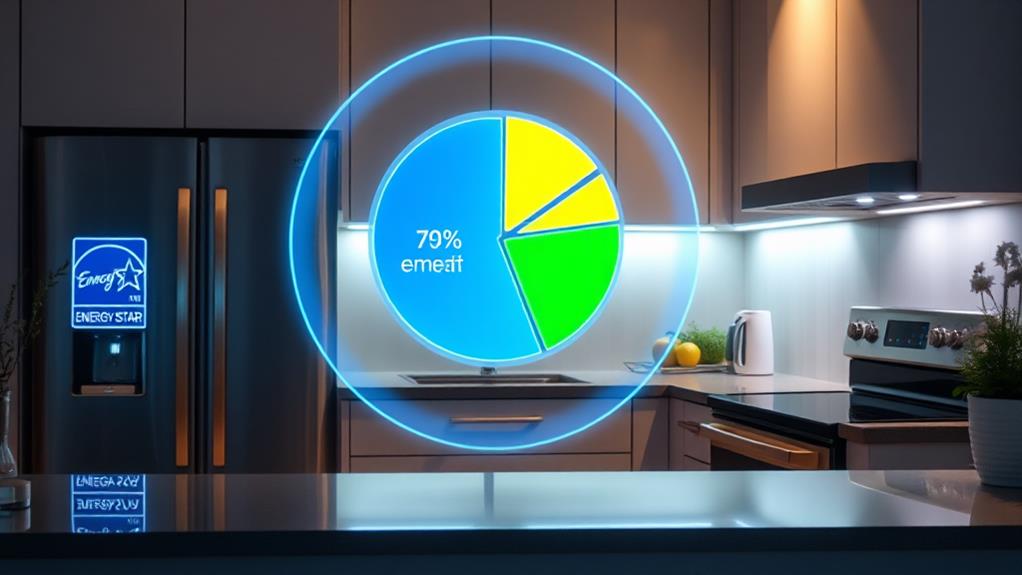
When it comes to energy consumption in your home, knowing which appliances are the biggest power hogs can help you make smarter decisions about usage and upgrades. Your HVAC system typically accounts for the largest portion of your energy bill, consuming about 40-50% of your home's total energy.
Water heaters follow, using approximately 14% of your household energy.
Large appliances like refrigerators and clothes dryers each consume about 4-5% of your home's energy. Washing machines, dishwashers, and ovens use roughly 1-2% each. Lighting, while often overlooked, can account for up to 12% of your energy usage, depending on the types of bulbs you're using.
Electronics and small appliances may seem insignificant individually, but they can add up. TVs, computers, and gaming consoles collectively use about 7% of your home's energy. Don't forget about phantom energy draw from devices left plugged in but not in use – this can account for up to 10% of your electricity usage.
Choosing Energy-Saving Home Appliances
Smart consumers know that choosing energy-efficient appliances is a key strategy for reducing household energy consumption and lowering utility bills. When you're in the market for new appliances, look for the Energy Star label. This certification indicates that the product meets strict energy efficiency guidelines set by the U.S. Environmental Protection Agency and the Department of Energy.
To make informed decisions, compare the annual energy consumption of different models. You'll find this information on the EnergyGuide label, which displays the estimated yearly operating cost and energy use. Don't just focus on the purchase price; consider the long-term savings from lower energy bills.
For refrigerators, opt for models with the freezer on top or bottom, as side-by-side designs tend to use more energy. Choose front-loading washing machines over top-loaders, as they're generally more efficient. When selecting a dishwasher, look for ones with energy-saving wash cycles and air-dry options. For HVAC systems, pay attention to the SEER (Seasonal Energy Efficiency Ratio) rating; higher numbers indicate greater efficiency. By prioritizing energy efficiency in your appliance choices, you'll reduce your carbon footprint and save money in the long run.
Cost-Benefit Analysis of Efficient Lighting
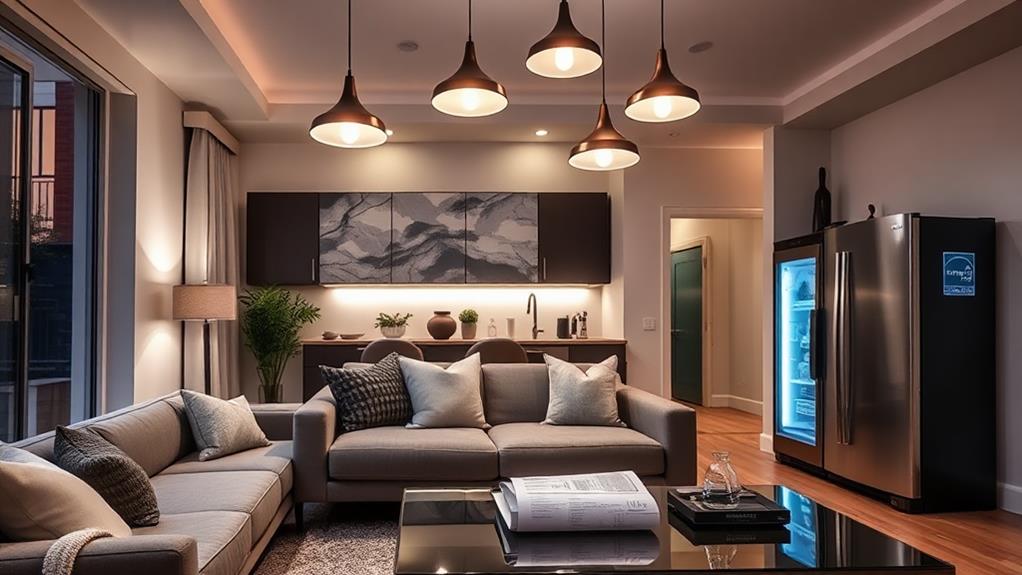
Weighing the costs and benefits of efficient lighting can help you make informed decisions about your home's illumination. While energy-efficient bulbs like LEDs and CFLs may have a higher upfront cost, they offer significant long-term savings.
LED bulbs, for instance, use up to 75% less energy than traditional incandescent bulbs and can last 25 times longer.
To calculate the cost-benefit, consider the initial purchase price, energy consumption, and lifespan of each bulb type. For example, a 60-watt equivalent LED bulb might cost $5 but use only 9 watts of electricity and last 25,000 hours. In contrast, an incandescent bulb costs about $1 but uses 60 watts and lasts only 1,000 hours.
Over time, you'll replace the incandescent bulb 25 times, spending $25 on bulbs alone. Factor in the energy costs, and the LED becomes even more economical. Assuming electricity costs $0.12 per kWh, you'd spend about $27 on electricity for the LED over its lifespan, compared to $180 for incandescent bulbs. The total savings with LED can exceed $170 per bulb over its lifetime.
Future Trends in Eco-Friendly Illumination
The lighting industry is rapidly evolving, with eco-friendly innovations paving the way for a brighter, more sustainable future. You'll soon see a shift towards more intelligent lighting systems that adapt to your needs and environment.
Smart bulbs and fixtures will automatically adjust their brightness and color temperature based on natural light levels, time of day, and your activities.
Expect to see advancements in organic light-emitting diodes (OLEDs) and quantum dot technology. These will offer improved energy efficiency and color rendering, making your home feel more vibrant and natural. You'll also find an increased use of solar-powered lighting solutions, both indoors and outdoors.
Biomimicry will play a significant role in future lighting designs. You'll encounter fixtures inspired by nature, such as bioluminescent organisms, that provide gentle, energy-efficient illumination. Additionally, you'll see a rise in human-centric lighting systems that support your circadian rhythm and overall well-being.
As sustainability becomes increasingly important, you'll find more lighting products made from recycled materials and designed for easy disassembly and recycling. This circular approach will help reduce the environmental impact of your lighting choices.
Conclusion
You've now unlocked the secrets of energy-efficient lighting and appliances! By embracing smart LED systems, solar-powered fixtures, and Energy Star-rated products, you'll slash your energy bills into oblivion. Remember, efficient lighting isn't just for one room—it's for your entire home. As you move forward, keep an eye on emerging eco-friendly trends. With these insights, you're not just illuminating your space; you're lighting the path to a greener, more sustainable future.
